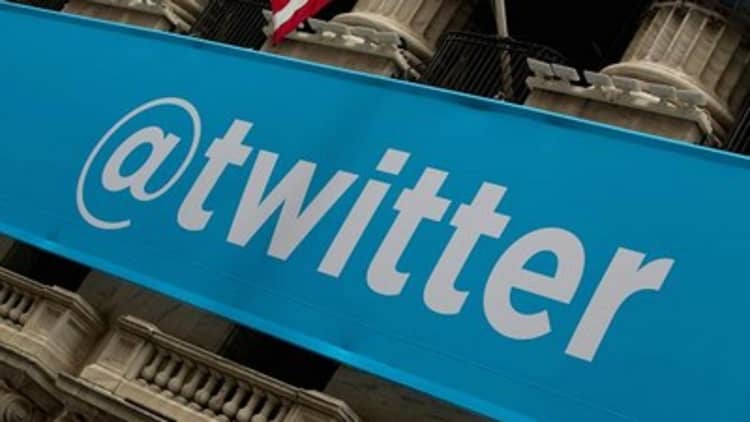A year ago Twitter was praised for executing its IPO without a hitch, delivering a healthy opening pop for investors, without any of the trading glitches that plagued Facebook.
Fast forward one year: Facebook shares have surged 58 percent, while Twitter's are trading about 8 percent below the IPO price of $45.10, and big institutional investors have cut their holdings.
With user growth slowing (66 million monthly active users were added in the last year, a slight decline in growth), the company is struggling with questions about whether it can appeal to the mainstream. It has 284 million total users, compared with Facebook's 1.35 billion.
Read MoreA not-so-happy IPO birthday for Twitter
Perhaps because of this, the company's been trying to shift the focus away from the number of people who tweet, to the larger universe of people who see those tweets, on TV or elsewhere around the Web.
With a ton of management turnover, CEO Dick Costolo is being harshly criticized (CNBC's Jim Cramer has called for a management change) and is under pressure to define his vision for the company.
Five of Costolo's direct subordinates have left or been replaced, and Costolo named his fifth head of product in the past five years just last week. Now the pressure is on Costolo and new CFO Anthony Noto to lay out their vision at the company's first investor day next Wednesday.
Read MoreCramer takes jabs at Twitter and CEO Costolo, again
The news isn't all bad, however. In the past year, the company has made crucial acquisitions and integrated the mobile video company MoPub it bought just before its IPO. MoPub delivers mobile ads across the Web—a growing business regardless of how many people tweet or see tweets. The company also bought Gnip—which analyses Twitter data—native mobile ad company Namo Media, Tap Commerce and Mitro.

In an effort to weave Twitter into all mobile apps, it unveiled a new developer kit called Fabric late last month, combining tools from some of its acquisitions.
Plus there's new potential in e-commerce. It's testing a "buy button," which holds the promise for generating a new revenue stream as well as bolstering ad purchases from retailers.
Over the past year, Twitter's stock looks like a sine wave—a roller coaster of beaten, met, and disappointed expectations. Now investors are wondering what bar to measure Twitter's performance against—if not Facebook then what? Can Twitter weave itself through the fabric of the Web?
Read MoreWhat Apple's fomer CEO thinks of Twitter
More than three-quarters of Twitter's active users are outside the U.S., though the majority of its revenue is from the U.S.. There's opportunity in closing that gap, but that's just the first step in convincing investors of Twitter's long term potential.



